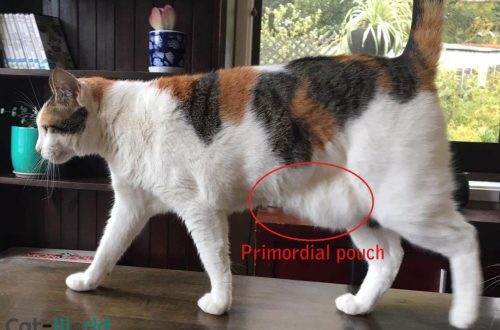
Frostbite a cikin cat: alamun asibiti da rigakafin
Cats, like people, can get frostbite. A common type of skin injury is frostbite in the ears of a cat. Most often this happens in animals living in regions where the outside air temperature drops below 0 degrees Celsius. However, with proper care, you can easily prevent such an injury. But if the cat has frostbitten ears, what to do? And how to help if the cat is still cold?
Contents
What is frostbite in cats
Frostbite is skin damage caused by prolonged exposure to freezing temperatures. Under the influence of low temperatures, the blood vessels that supply the skin with blood narrow. When this happens, the heat, oxygen, and nutrients that the blood delivers to the skin are used to maintain the body’s internal temperature. As a result, the skin freezes and ice crystals form inside the skin cells, causing the cells to rupture and die.
This mechanism is aimed at preserving life, but frostbite can lead to irreversible damage to the skin. The skin covering the limbs, including the tail, paws, nose, and ears, is most at risk of frostbite.
Frostbite varies in severity. First-degree frostbite is the mildest form. It affects only the top layer of the skin and usually does not cause permanent damage. Frostbite of the third and fourth degree occurs when the paw, nose or ear freezes over. This leads to irreversible damage and permanent deformation.
Clinical signs of frostbite in cats
The signs of this injury are fairly easy to recognize. These include:
- change in skin color – white, gray blue, red, dark purple or black;
- redness, swelling and soreness of the skin during thawing;
- blisters that may be filled with blood
- skin or limbs feel hard and cold to the touch;
- fragile, cold skin that cracks when touched;
- ciwon fata;
- dead skin that flakes off.
Signs of frostbite may appear within days or weeks, especially when the cat has frostbite on its ears. If, as a result of frostbite, the skin is destroyed, it gradually turns black, becomes dead, and finally falls off.
Any cat living outdoors at temperatures below 0 degrees Celsius is at risk of frostbite. However, kittens and older cats are at a higher risk of frostbite, as are any cats that have conditions that slow blood flow to their extremities, such as diabetes, heart disease, kidney disease, or hyperthyroidism.
What to do if your cat has frostbite

If the owner suspects that their kitty has received frostbite, the following steps can be taken to help her:
- Take the cat to a warm and dry place. According to Animed, if a cat is trembling, cold, or lethargic, it’s time to start worrying. It should be wrapped in warm towels heated in the dryer so that it warms up slowly.
- Do not rub, massage, or apply any lotion to skin that appears to be frostbite. You can warm the skin by placing the frostbitten area in warm, but not hot water – it should be cool enough to comfortably hold your hand in it. You can also use warm compresses. Pat the affected areas gently with a towel. Do not rub the skin and do not use a hair dryer to warm it.
- It is not necessary to warm frostbitten areas of the skin, if then it will not be possible to constantly maintain heat in this place. If the skin thaws and then freezes again, this will lead to additional injuries.
- Do not give a cat painkillers intended for humans – most of them are toxic to pets. Give your pet prescription painkillers, but only if prescribed by a veterinarian.
When caring for a cat with frostbite, it is important to call your veterinarian as soon as possible. If possible, you need to get to the clinic for first aid. Perhaps a veterinarian will be able to advise by phone, but most likely he will offer an in-person examination.
Frostbite in cats: diagnosis, treatment and prevention
The veterinarian will examine the cat and let you know what other treatment it needs. Frostbite is diagnosed based on the history and physical examination findings. The specialist will also provide first aid to the animal. In some cases, treatment may include antibiotics if the skin is infected or at risk of infection.
Frostbite in cats is painful, so your veterinarian will likely prescribe pain medication. After that, it remains only to wait to see if frostbitten skin can recover.
You may need to bring your cat in for a re-examination because it may take time for signs of frostbite to show. In severe cases, when a significant area of the skin dies off or the risk of gangrene develops, amputation of the affected area may be required. Fortunately, even if a cat loses the tip of its ear due to frostbite, it will not affect its hearing in any way.
The best way to prevent frostbite in a cat is to keep it indoors when the temperature drops below freezing. If the cat refuses to stay at home or tries to run away, it is necessary to build a warm and dry shelter for her in the air, where she can rest when it gets completely cold outside.
Dubi kuma:
Yadda za a rage zafi a cikin cat? Wadanne kwayoyi ne masu haɗari ga kuliyoyi?
Shin ina bukatan tsaftace kunnuwa na cat?
Sensitive Skin and Dermatitis in Cats: Symptoms and Home Treatments





